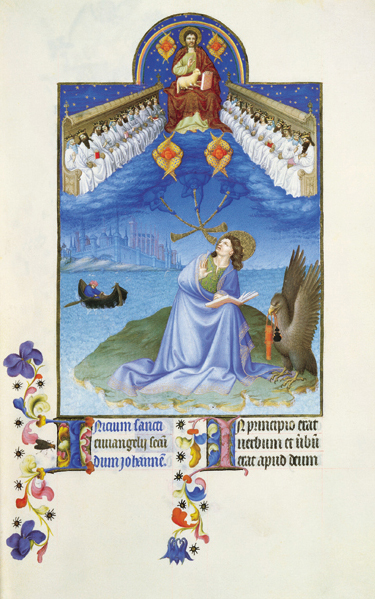Image Details

Giraudon/Art Resource, NY
A hotline to the heavenly hosts. Celestial trumpets ring in John’s ear and an eagle clutches a portable inkstand in its beak as John opens his book in Les Très Riches Heures du Duc de Berry, an early-15th-century manuscript illuminated by the Flemish Limbourg brothers. Tradition has long linked the author of Revelation with the evangelist of the same name—thus the presence of the eagle, the gospel writer’s symbol.
John’s receptive, upturned eyes absorb the vision at hand: Twenty-four elders with gilded crowns seem to emanate, ray-like, from Jesus, whose lap holds a lamb and the scroll with seven seals (Revelation 5:1, 8). According to the opening chapter of Revelation, John was exiled to the island of Patmos, where Jesus, in a vision, commanded him to “write what you have seen and what is to take place after this” (Revelation 1:19). Write he does, setting to paper some of the most vivid—and mysterious—imagery in the Bible. Said St. Jerome, translator of the Bible into Latin, “Revelation has as many mysteries as it does words.”
